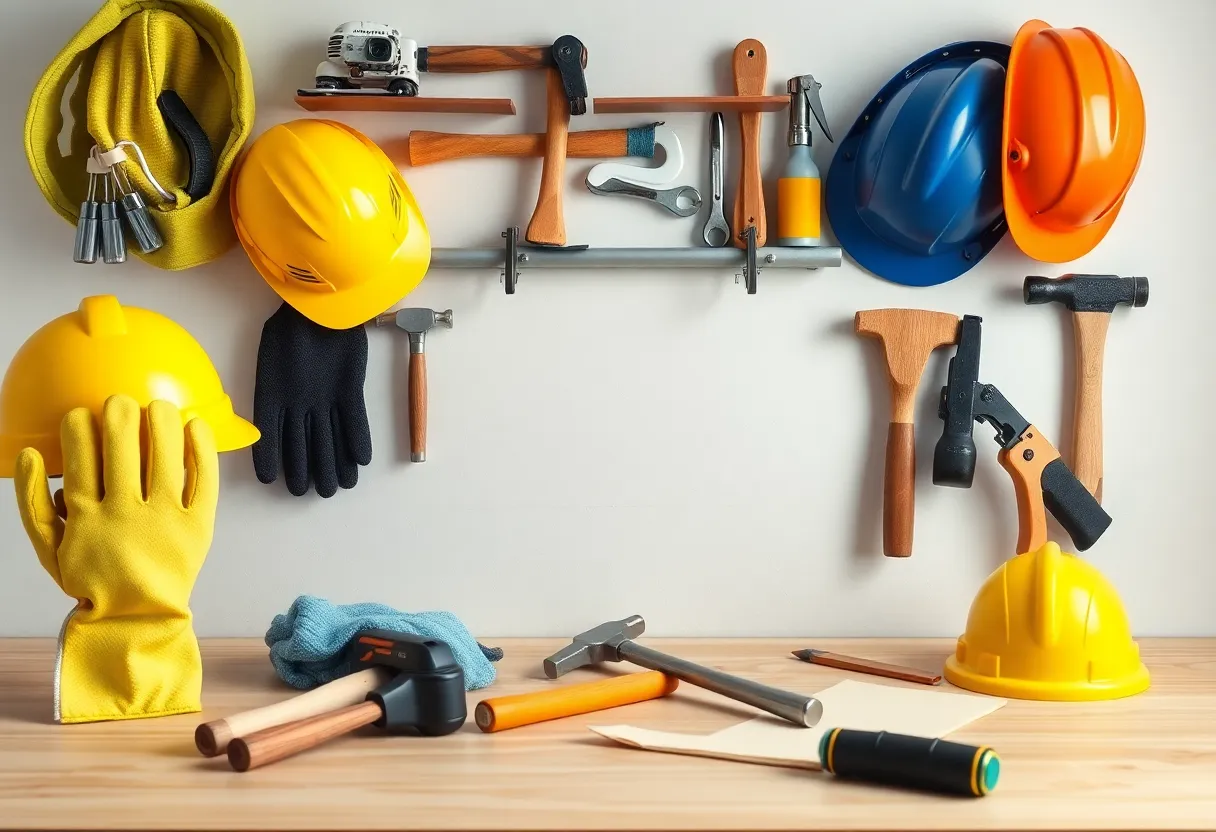What Are the Most Essential Safety Tips for DIY Home Improvement Projects?
Undertaking DIY home improvement projects can be rewarding. It offers both financial savings and personal satisfaction. However, these projects inherently involve potential hazards. Proper safety precautions are essential to prevent injuries and property damage. This article provides a comprehensive overview of the most critical safety tips, emphasizing practical measures and best practices for safe DIY endeavors.
Understanding the Risks in DIY Home Improvements
Before diving into safety protocols, it’s vital to recognize common risks associated with DIY projects:
- Falls and slips from ladders, scaffolding, or uneven surfaces
- Electrical hazards from mishandling wiring or tools
- Injuries from tools and equipment such as cuts, punctures, or crush injuries
- Exposure to hazardous substances including paints, solvents, or insulation materials
- Fire hazards from improper use of heat sources or electrical faults
These risks underscore the importance of adopting comprehensive safety measures.
Pre-Project Planning and Preparation
Assessing the Project Scope and Hazards
Before beginning, perform a detailed assessment of the project’s scope. Identify potential hazards specific to the tasks involved. Understanding the environment and materials used can inform safety precautions.
Gathering Proper Tools and Safety Equipment
Ensure all tools and equipment are appropriate for the project. Use quality safety gear such as:
- Helmets or hard hats to protect the head
- Safety glasses or goggles to shield eyes
- Ear protection like earplugs or muffs against noise
- Gloves suitable for handling sharp or hazardous materials
- Dust masks or respirators when working with dust, fumes, or chemicals
Inspect equipment before use. Damaged or worn tools increase injury risk.
Planning the Work Space
Create a safe and organized workspace. Clear clutter, secure or store away trip hazards, and designate zones for tools and materials. Adequate lighting ensures visibility and safety.
Personal Safety Safety Tips During Execution
Wear Appropriate Personal Protective Equipment (PPE)
Wearing PPE is non-negotiable. It minimizes injury risk during all phases of a project. Always select PPE compatible with specific tasks.
Use Tools Correctly
Follow manufacturer instructions strictly. Use the right tool for the job. Avoid makeshift modifications. Maintain tools regularly to ensure safety and efficiency.
Practice Safe Ladder and Scaffolding Use
- Ensure ladders are stable and on even ground
- Maintain three points of contact when climbing
- Do not overreach; move the ladder as needed
- Inspect scaffolding for defects before use
Never lean out excessively or overload structures.
Handle Electrical Components Carefully
Switch off power sources before working on electrical systems. Use insulated tools and proper testing equipment. Be mindful of moisture and avoid working in wet conditions.
Manage Chemicals and Hazardous Materials Safely
Store chemicals securely, label properly, and handle with care. Work in well-ventilated areas. Use respiratory protection when necessary. Follow disposal regulations for hazardous waste.
Special Considerations for Common DIY Tasks
Carpentry and Framing
- Use cut-resistant gloves when handling sharp tools and materials
- Use dust masks to prevent inhalation of wood dust
Painting and Finishing
- Ensure proper ventilation to avoid inhaling fumes
- Wear masks and gloves to protect skin and respiratory system
Plumbing Work
- Turn off water supply before commencing work
- Use appropriate tools to prevent leaks and accidents
Electrical Work
- De-energize circuits before handling wiring
- Employ circuit testers to verify power is off
Emergency Preparedness and Response
Have a First Aid Kit Accessible
Maintain a well-stocked first aid kit within reach of the worksite. Include bandages, antiseptics, pain relievers, and other essentials.
Know Emergency Procedures
Be familiar with basic first aid protocols. Know how to respond to burns, cuts, electric shocks, and falls. Have emergency contact information readily available.
Maintain Clear Communication
If working with others, establish clear communication channels. Use signals or radios for coordination. Never assume safety is implied; confirm intentions explicitly.
Post-Project Safety Measures
Inspect and Clean Up
Once the work is complete, thoroughly examine the site for hazards. Secure leftover materials and tools. Clean debris and waste to prevent accidental injuries.
Review and Document
Assess what went well and areas for improvement. Document safety steps taken for future reference. Continuous learning enhances safety awareness.
Legal and Regulatory Considerations
Be aware of local building codes and regulations. Some projects require permits or inspections. Neglecting legal requirements can result in safety hazards and legal liabilities.
Conclusion
Safety in DIY home improvement projects is paramount. Proper planning, appropriate tools, PPE, and awareness significantly reduce risks. Emphasize prevention over reaction. Prioritize safety at every step to protect yourself, your family, and your property.
Remember, even with extensive experience, safety is an ongoing commitment. Maintaining vigilance and following proven safety tips ensure that your home improvement endeavors are successful and hazard-free.
Author: STAFF HERE INDIANAPOLIS WRITER
The INDIANAPOLIS STAFF WRITER represents the experienced team at HEREIndianapolis.com, your go-to source for actionable local news and information in Indianapolis, Marion County, and beyond. Specializing in "news you can use," we cover essential topics like product reviews for personal and business needs, local business directories, politics, real estate trends, neighborhood insights, and state news affecting the area—with deep expertise drawn from years of dedicated reporting and strong community input, including local press releases and business updates. We deliver top reporting on high-value events such as the Indianapolis 500, Indy Jazz Fest, and the Indiana State Fair. Our coverage extends to key organizations like the Indy Chamber and Visit Indy, plus leading businesses in motorsports and healthcare that power the local economy such as Indianapolis Motor Speedway and IU Health. As part of the broader HERE network, we provide comprehensive, credible insights into Indiana's dynamic landscape.





